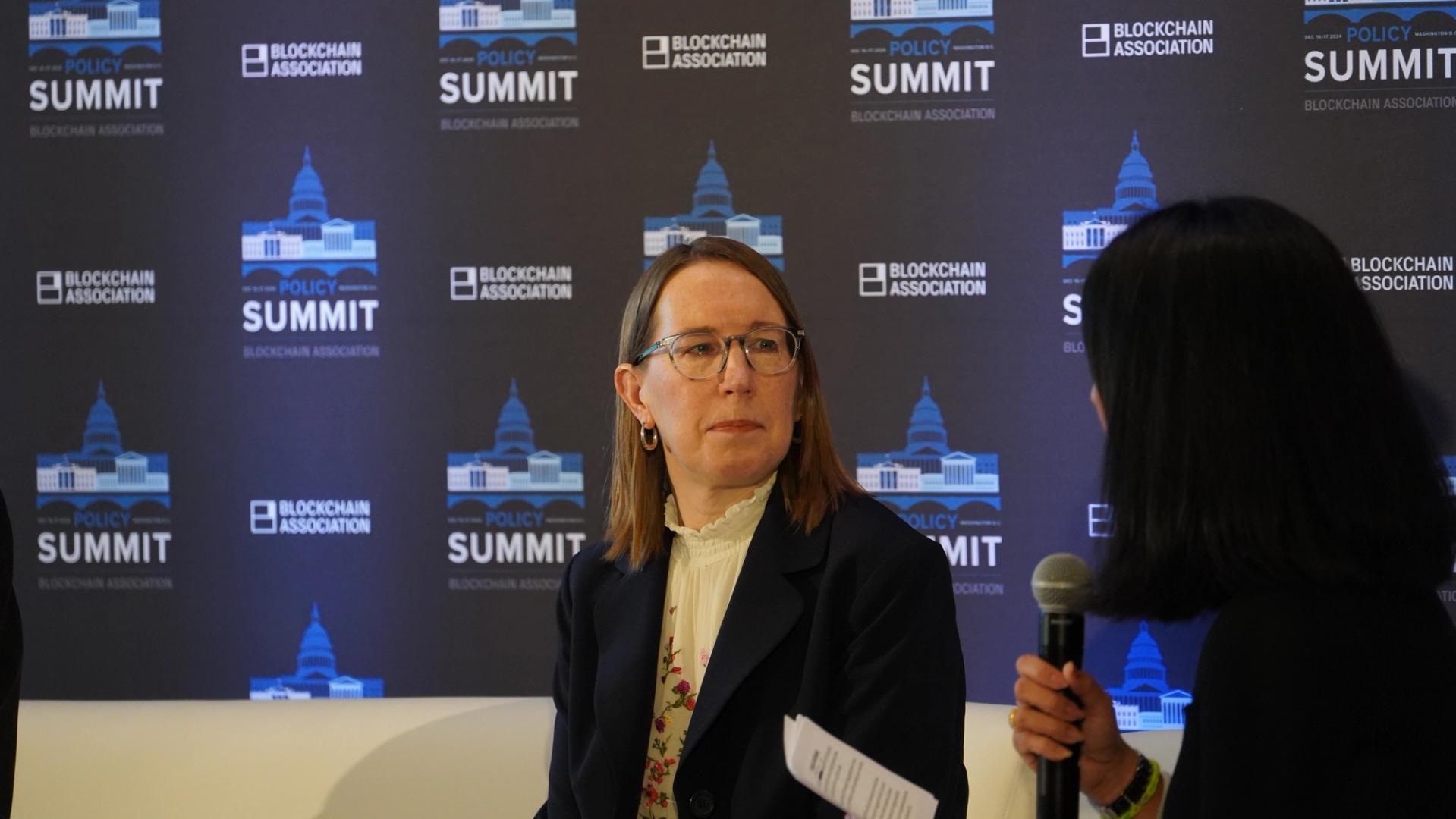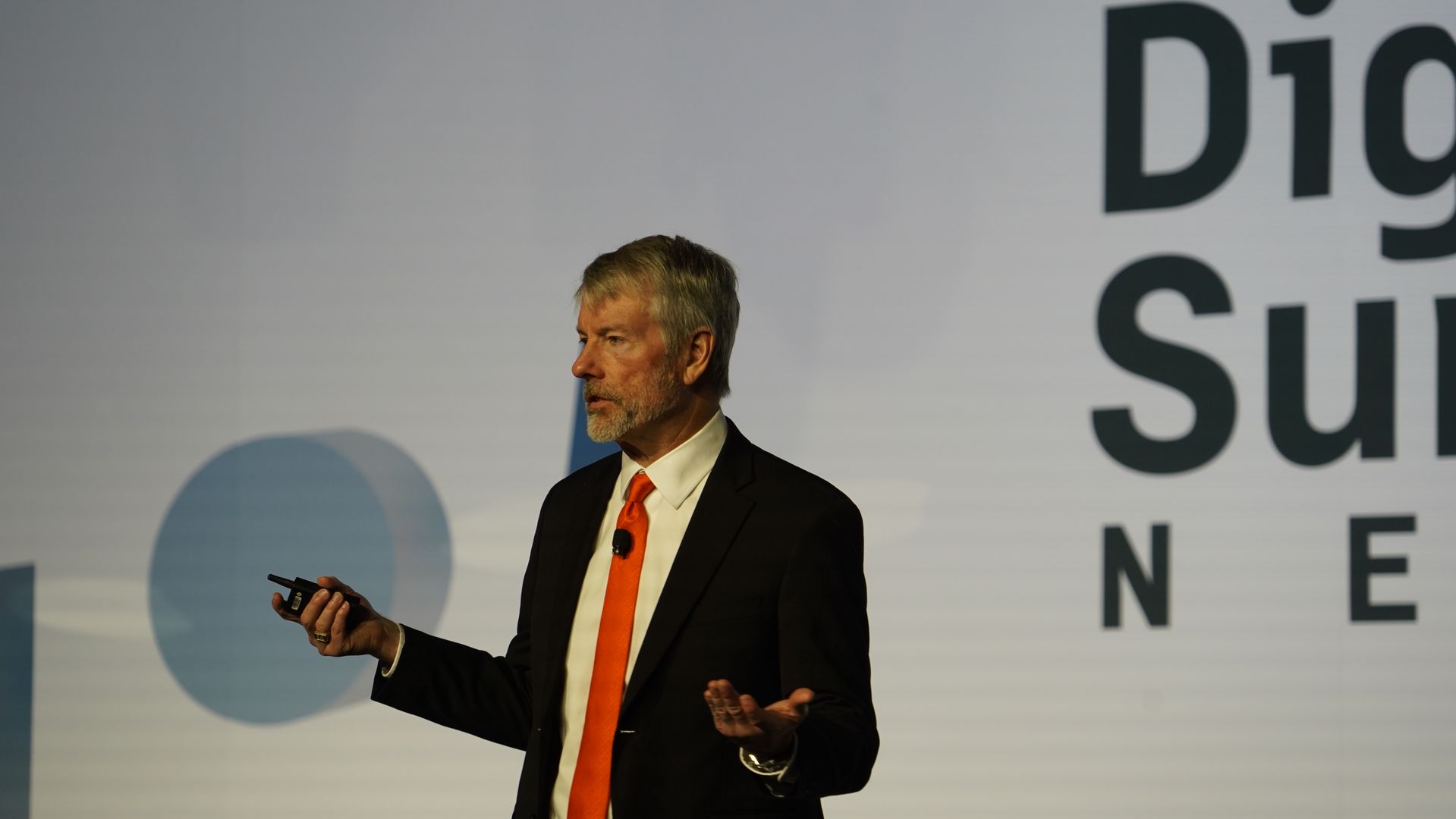Uncategorized
Tether’s Market Value Sees Sharpest Decline Since FTX Crash as MiCA Kicks In

Tether’s USDT, the world’s leading dollar-pegged stablecoin, has experienced the sharpest weekly decline in market value in two years, spurring market volatility concerns.
USDT’s market cap slid more than 1% to $137.24 billion this week, the most significant decline since the crash of the FTX exchange in the second week of November 2022, data from TradingView show. It hit a record $140.72 billion in mid-December.
The decline follows a decision by several European Union (EU)-based exchanges and Coinbase (COIN) to remove USDT due to compliance issues with the EU’s Markets in Crypto-Assets (MiCA) regulations that took full effect on Dec. 30, even though the rules on stablecoins — cryptocurrencies whose value is pegged to a real-world asset like the dollar — kicked in six months ago.
The regulation requires issuers to have a MiCA license for publicly offering or trading asset-referenced tokens (ARTs) or e-money tokens (EMTs) within the bloc. An ART is a crypto asset that looks to maintain a stable value by referencing another asset like gold, crypto tokens or a combination of both, including one or more official currencies. ERTs reference a single national currency, just as USDT does.
EU-based traders can still hold USDT in non-custodial wallets, but can’t trade it on MiCA-compliant centralized exchanges.
USDT is a gateway to the crypto market, with investors using it extensively to fund spot cryptocurrency purchases and derivatives trading. As such, the delistings and drop in market value has sparked speculation of a broader crypto market slide on social media.
These concerns, however, may be unfounded and the negative impact, at best, could be restricted to the euro area, Karen Tang, the head of APAC partnerships at Orderly Network, a permissionless Web3 liquidity layer, said in a post on X.
«Access to @Tether_to set to be restricted in the EU due to MiCa regulation isn’t going to harm USDT dominance,» Tang wrote. «EU isn’t the largest crypto market. Most crypto trading volume occurs in Asia and U.S. All this will do is stunt the EU’s digital assets innovation, which is already slow due to convoluted overregulation. If I could short the EU, I would…»
Crypto analyst Bitblaze said Asia accounts for the giant share of the tether volume, downplaying the impact of MiCA-led delistings in Europe.
«USDT is the largest stablecoin, with a market cap of $138.5B and a daily trading volume of $44B. As of today, 80% of USDT’s trading volume comes from Asia, so the EU delisting won’t have any severe impact,» Bitblaze noted on X.
Tether has invested in MiCA-compliant firms StablR and Quantoz Payments in a bid to ensure regulatory alignment.
Uncategorized
Crypto Staking Doesn’t Violate U.S. Securities Law, SEC Says

Crypto staking, under certain circumstances, does not appear to implicate U.S. securities law, a branch of the U.S. Securities and Exchange Commission said late Thursday.
The SEC’s Division of Corporation Finance published a staff statement — the latest in a series from the regulator — spelling out how the regulator may evaluate proof-of-stake networks, mainly noting that covered activities do not «involve the offer and sale of securities» — meaning the SEC won’t sue any person or company participating in those activities.
Node operators and validators, custodians, delegates, nominators and entities staking assets either on their own, staking directly with a third party or staking on behalf of an asset’s owners fall into this bucket, the staff statement said. In this, the SEC seems to suggest that staking will be treated identically to mining, the consensus mechanism securing networks like Bitcoin BTC, which the SEC clarified also did not implicate securities laws in a similar staff statement last month.
The SEC’s staff statement was «very clear for a subject that can be a little bit complicated,» said Lorien Gabel, the CEO of staking-focused crypto firm Figment. And its main upside appears to be saying that various activities U.S. companies might have shied away from in the past are okay now.
«They included some ancillary staking activities. For example, we provide insurance around slashing [and we also provide] modified unbonding periods,» he said. «And they said that actually doesn’t mean that you’re a manager of assets as a staking provider.»
The SEC statement said companies that want to provide those types of services, or even pooled staking, can do so, he said.
Thursday’s statement is an incremental but important update from the regulator, said Alison Mangiero, the head of staking policy at the Crypto Council for Innovation.
«This reaffirms that there’s going to be similar treatment for stakers that there is for miners. And I think it’s especially important because, given under [former SEC Chair Gary] Gensler, there were so many enforcement actions that were focused on staking as a service … we saw a lot of those cases dismissed, and the Coinbase case dismissed with prejudice,» she said. «We assumed that this would be the stance, but actually having a staff statement that asserts it, I think is crucially important.»
The fact it came just days before the SEC faces a deadline on a number of applications to bring staking into spot ether ETH exchange-traded funds (ETFs) is telling, she said.
It’s likely that the ETF providers would have received staking approvals regardless, but the SEC statement will likely start speeding up the process for securing those approvals, Gabel said.
As with the SEC’s previous staff statements, Thursday’s included a footnote clarifying that it is very narrowly tailored and certain restrictions would apply. It is not a replacement for rulemaking done through the actual commissioners and «has no legal force or effect,» the footnote said.
«This statement only addresses certain activities involving Covered Crypto Assets that do not have intrinsic economic properties or rights, such as generating a passive yield or conveying rights to future income, profits, or assets of a business enterprise,» another footnote said.
Uncategorized
Fastex Expands U.S. Presence With Los Angeles Office

Fastex, a Dubai-based crypto exchange, is expanding its presence in the U.S., building out an office in Los Angeles, California.
According to a Thursday announcement, Fastex will offer spot crypto trading services of tokens including bitcoin BTC, ether ETH, Cardano ADA, Solana SOL and its native utility token, Fasttoken FTN, to both retail and institutional investors in the U.S.
Fastex’s American expansion comes as the U.S. continues to overhaul its approach to crypto regulation under President Donald Trump’s administration. Since Trump took office in January, the U.S. Securities and Exchange Commission (SEC) has retreated from the so-called regulation-by-enforcement approach to crypto it took under former Chair Gary Gensler, dropping a host of open investigations and closing ongoing litigation against crypto exchanges.
In an interview with CoinDesk at Bitcoin 2025 in Las Vegas, Fastex’s Chief Legal Officer and board member Vardan Khachatryan said that the SEC’s softened stance toward crypto regulation played a major role in the exchange’s decision to expand in the U.S., though he acknowledged that there is still no concrete legal framework for crypto in the country.
“There has been enough of a policy change, at least in terms of [how the U.S. government is] viewing things, that allowed us to go for this,” Khachatryan said. “It’s still kind of a risk, but it’s a lower risk.”
With a host of crypto companies returning to the U.S. due to the Trump Administration’s crypto-friendly policies, cities like New York are hoping to attract companies expanding to the U.S. to set up shop in their jurisdictions.
But, while Khachatryan said New York would be “the right place to be in terms of headquarters,” he said that, for now, the prospect of obtaining a BitLicense — the notoriously difficult-to-obtain crypto license issued by the New York Department of Financial Services (NYDFS) — is prohibitive.
“I hope that things will change a bit,” Khachatryan said.
New York City Mayor Eric Adams, who has branded himself the “Bitcoin Mayor” in an attempt to lure crypto companies to New York, called for the end to the BitLicense regime during a speech at Bitcoin 2025 in Las Vegas on Wednesday.
Read more: NYC Mayor Eric Adams Calls for End of the NYDFS BitLicense, Proposes BitBond
Fastex is currently headquartered in Dubai, in the Dubai International Financial Centre (DIFC). Khachatryan said the exchange is currently working on obtaining a license from Dubai’s Virtual Assets Regulatory Authority (VARA).
After expanding in the U.S., Khachatryan said the exchange also has its eyes on a Latin American expansion, starting with Brazil, followed by Argentina and Mexico.
Uncategorized
Strategy Chair Michael Saylor Shares ‘21 Ways to Wealth’ in Vegas Keynote

LAS VEGAS, Nevada — Strategy (MSTR) Chair Michael Saylor waxed poetic about bitcoin in a keynote speech at Bitcoin 2025 in Las Vegas on Thursday, laying out his guiding principles — his so-called “21 ways to wealth” — for a jam-packed audience of fans and conference-goers.
“Satoshi started a fire in cyberspace, and while the fearful run from it and fools dance around it, the faithful feed the flame, dreaming of a better world, and bathe in the warm glow of cyberlight,” Saylor said. “What does that mean? It means that a lot of people that look at Bitcoin are going to be afraid of it. They’ll never touch it. They’ll never benefit from it. They’ll be left behind. Then others will just juggle it. They will juggle the fire. They will make fireworks with the fire. They will create trinkets with the fire. They will create magic tricks with the fire. But those that truly understand it will feed the fire. How do you feed the fire? You feed the fire by buying Bitcoin. “
Saylor — who has taken on a near-mythic status in the bitcoin community for his leadership of Strategy, a publicly-traded technology company-turned-bitcoin treasury company, which holds approximately 3% of the total bitcoin supply — said that people should trade their other, inferior assets for bitcoin.
“Take your fiat currency, trade it for bitcoin. Take your long term capital, trade it for bitcoin. Sell your bonds, trade [them] for Bitcoin. Sell your inferior equity, sell your inferior real estate property, buy bitcoin,” Saylor said. “Feed the fire, and what will come of that? An extraordinary explosion in the network and [in] the power of the network, and you will have bought your ticket to prosperity.”
Thus was Saylor’s third way to wealth — courage — which he said meant that wealth “favors those who embrace intelligent monetary risk.”
Bitcoin, like other assets, rises in price if more people buy it, though Saylor did not mention this effect during his speech.
In addition to courage, Saylor advised the audience to have conviction in bitcoin’s potential, to stay committed to one cause, to cooperate with their families and children, to embrace artificial intelligence, to consider civility when engaging with the “natural power structures of the world,” and to remember to be generous.
“When you are successful — and you will be successful — get up every morning and spread happiness, share security, and deliver hope to those less fortunate than you,” Saylor said. “You found the path first, you found the way first. You should spread good karma.”
-

 Fashion8 месяцев ago
Fashion8 месяцев agoThese \’90s fashion trends are making a comeback in 2017
-

 Entertainment8 месяцев ago
Entertainment8 месяцев agoThe final 6 \’Game of Thrones\’ episodes might feel like a full season
-

 Fashion8 месяцев ago
Fashion8 месяцев agoAccording to Dior Couture, this taboo fashion accessory is back
-

 Entertainment8 месяцев ago
Entertainment8 месяцев agoThe old and New Edition cast comes together to perform
-

 Business8 месяцев ago
Business8 месяцев agoUber and Lyft are finally available in all of New York State
-

 Sports8 месяцев ago
Sports8 месяцев agoPhillies\’ Aaron Altherr makes mind-boggling barehanded play
-

 Entertainment8 месяцев ago
Entertainment8 месяцев ago\’Better Call Saul\’ has been renewed for a fourth season
-

 Sports8 месяцев ago
Sports8 месяцев agoSteph Curry finally got the contract he deserves from the Warriors





